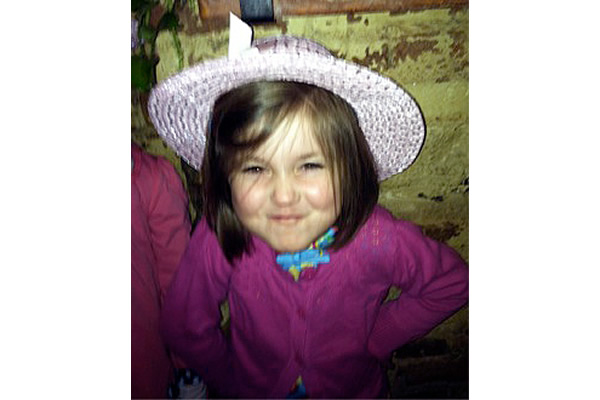
Want to make learning to read and write even more adventurous? There are many learning games and activities that will not only help your child or teen to become more successful in school, but will also be fun to play. Most of these activities can easily be created at home. Please note that many of the activities that follow can apply to different ability levels with just a few changes.
Some of these games can also apply to different achievement levels with just a little modification. For example, I Spy can be played with younger children with simple objects such as clocks, books, and pets. It can also be played with older teens with more elaborate objects such as watches, sundials, and flowers.
Some of these educational games and activities will be just as much fun as non-educational games. A few of these activities will involve some extra effort, and special attention will be needed to make those games more exciting. Being as cheerful and supportive as possible will help. After all, this is still work, as learning is work.
Reading Activities and Games
Head, Waist, Knees
Stand up and face your child. Choose a simple 3 or 4 letter word that has 3 sounds, like the words cat, read, or bake. Say the word, and then say the sounds. Each of you touch your head for the first sound, your waist for the second sound, and your knees for the third sound. For the word nap, for example, say the word, then touch your head when saying the /n/ sound, your waist when saying the short /a/ sound as in cat, and your knees when saying the /p/ sound. Try about 10 to 15 words.
Letter Bingo
Start by making a 5-by-5 grid. Put random letters into the grid. Choose letters your child still needs to learn. Also make a pile of letter cards. Play with regular rules. Modifications can be made to matching letters with given letter sounds. Instead of reading the letter, make the letter sound. Further variations for older children include creating Bingo cards with sight words, vocabulary words or high frequency words, or spelling words.
Tic-Tac-Toe
This simple game is the perfect game for letter practice. Set up a traditional Tic-Tac-Toe board. This means a 3 by 3 grid. Instead of using the usual X and O letters, choose other letters your child is learning. For example, one player takes the letter b and the other player takes the letter d. Players take turns putting down letters, and the first player to make a pattern of 3 letters in a row becomes the winner. Instead of letters, older players can use sight words, vocabulary words or high frequency words, or spelling words.
Make a Face
For Make a Face, choose a word from a read-aloud, other reading, vocabulary list, or other known word list. Draw a short line for each letter in the chosen word. The child guesses a letter. If correct, the letter is written on the appropriate line. If incorrect, a part of a face is drawn, like the head, eyes, or mouth. The goal is for the child to guess the word before the face is completed.
I Spy
This is an easy game to play almost anywhere whenever there are a few free minutes. The simple prompt is: “I spy something in this room that begins with the /b/ sound.” Be sure to make the sound that the letter b makes. The child then asks more specific questions such as “Is it blue?” or “Is it bigger than a bread box?” or “Is it on that wall?” Answers can be “yes” or “no” until the child discovers the correct answer. Possible answer: “Ball.” Graduate to play I Spy related to a read-aloud or other story. For example: “I spy a place in the story where the boy and girl play. It begins with the /b/ sound.” Answer: “Beach.”
Text-to-World Connections
Find connections in books to what is known about the world. Ask questions like: “What do you know about zoo animals?” These questions will help your child when reading a story about elephants, giraffes, or zebras. Making text-to-world connections are important to building background knowledge and enhancing reading for meaning.
Writing Activities and Games
Illustrations
Start with a blank paper and a pencil. Encourage your child to create a picture. When your child says the work is complete, ask your child to explain the picture. After the explanation, ask your child to add additional details. Consider crayons to add color. When that work is complete, ask your child to add a one or two sentence caption.
The 10/200 Rule
Set a timer for 10 minutes. The goal is to write for 10 minutes without stopping, or to write 200 words, whichever comes first. Just write what comes to mind or describe something seen. Do this as a group activity, challenge each other to complete, and then share the writing afterwards. Because of the quick write, and because of just writing down what comes to mind, most of the time, sharing the writing will lead to laughter.
Random Words
Can the dictionary be fun to use? Yes! Open the dictionary to a random page near the beginning. Close your eyes and point to a word. Open your eyes, read the word, discuss the word, and talk about how the word could be used in writing. Then open the dictionary to another random page near the middle. Repeat the same activity. Then open the dictionary to another random page near the end. Repeat the same activity. To go a little further, try to connect the 3 words in some way. How are the words the same? How are the words different? How could all the words be used together?
Story Builders
One person says a random word. For example, the person may say “quarter.” The next person puts that word into a sentence, such as “It’s a State of New Hampshire quarter with the picture of the Old Main in the Mountain.” The next person adds even more context such as “It’s a State of New Hampshire quarter with the picture of the Old Man in the Mountain. It fell through a hole in a pocket.” The story continues with where the quarter goes next. Keep this activity going until the short story is complete.
Scavenger Hunt
Play a scavenger hunt game by writing notes that send your child to another note and eventually to a surprise. Start with a message that instructs the reader to go to another part of the house, look for something special, and then look for an additional note. Lead the reader back to the kitchen for an ice cream sundae, or to the bedroom for a book as a present.
Word Games
Check out games like Boggle, Boggle Jr., Probe, Scrabble, Scrabble Jr., Quizzler, or Word Yatzee. Presented with some challenge, these games can quickly become the games of choice. Only have a few minutes? Play a quick came of Make a Face. Choose a powerful word. Draw a short line for each letter in the chosen word. The child guesses a letter. If correct, the letter is written on the appropriate line. If incorrect, a part of a face is drawn. The goals is for the child to guess the word before the face is completed.
Activities for Reluctant and Struggling Learners
All Games
Do you have an older child in your house who can pair up with a younger sibling? Encourage that child to play one of the previously mentioned games with a younger sibling. Whether it’s one of the simple games like I Spy, or one of the more advanced activities like the 10/200 Rule, your reluctant and struggling learner will not only benefit from teaching the directions, but may also benefit from reinforcing known skills.
Crazy Word
Create a night when all family members take a crazy word to the dinner table. Challenge all family members to find words with unusual spellings. Start with the newspaper where you might find a wealth of words and a variety of usages. Scanning the dictionary should be acceptable and even suggested. An internet search might reveal some interesting words, too. Words like vacuum, one of the few words with the double letter u, might become the most unusual presentation one night. Participants can vote for the craziest word.
Secret Codes
Playing with letters is a wonderful way to reinforce letters and letter sounds, and to challenge your struggling learner. On a sheet of paper, write a simple message, for instance: “You are a fantastic reader.” On another piece of paper, write the letter that comes after each letter, for instance: “Zpv bsf b gboubtujd sfbefs.” Your child can then attempt to break the code. After your child masters this code, create something more difficult. Note that some children may need some extra help to get started.
25 Words
Set a timer for 5 minutes. The goal is to create a list of as many known words as possible within the 5 minutes. Start by just writing words that come to mind, or words that describe something seen. Then move towards themes, such as words that describe summer, or words found in a book about animals, or words used by soccer players, or maybe even a list of funny sounding words. Refer to the list for future writing.
Homemade Games
Create original board games. Simply get a big piece of poster board. Draw a race track. Add some race car pictures and make some spaces on the track. Add more spaces for older children or teens. Then add words to each space. For example: “Go ahead 1 space” or “Go back 2 spaces” or “Stay put.” Make some player tokens or take from another game. Use dice and move around the board. Add math fact cards if desired. Each card could be a math fact: “3+3=?” or “4×3=?” Correct answers mean taking an additional turn.
What’s It Worth?
Set up the alphabet. Under each letter, write a number. A=1, B=2, C=3 and so on. Then write your name. Substitute each letter of the name with a corresponding number. For example, for Bruce, the B is 2 points. The R is 18 points, the U is 21 points, and so on. Add the numbers. Determine the number for the name for each family member. Who has the highest number? Who has the lowest number? What is the average? And so on. Take the names of book characters and play again.
Computer Activities for All Ages
Author Websites
For all ages, check out some author pages online. Jan Brett, for example, presents a website that offers basic information about herself as an author and illustrator, as well as additional research information used in her books. Also check out Mary Pope Osborne or JK Rowling‘s websites. Read about the author and send a letter. You can look forward to a response.
Story Starters
There are many websites which offer story starters. Start with Scholastic. This website is especially fun because all story starters mix up main ideas and details randomly. Spin the wheel to match something of interest and start to write. Then spin the wheel a second time, match up something else of interest, and start to write again. Repeat as often as the interest is sparked.
Bruce Johnson is an educator, reading specialist in Merrimack Valley School District in New Hampshire, member of CLiF’s Advisory Board, and author of Helping Your Child Become Successful in School: A Guide for Parents. Learn more at www.guidesforparents.wordpress.com.



